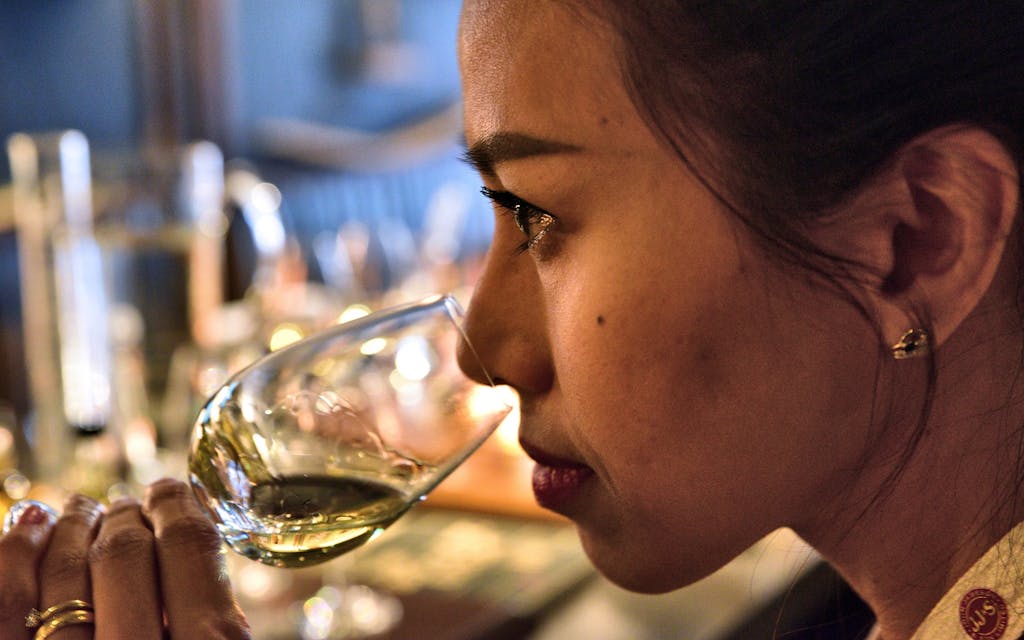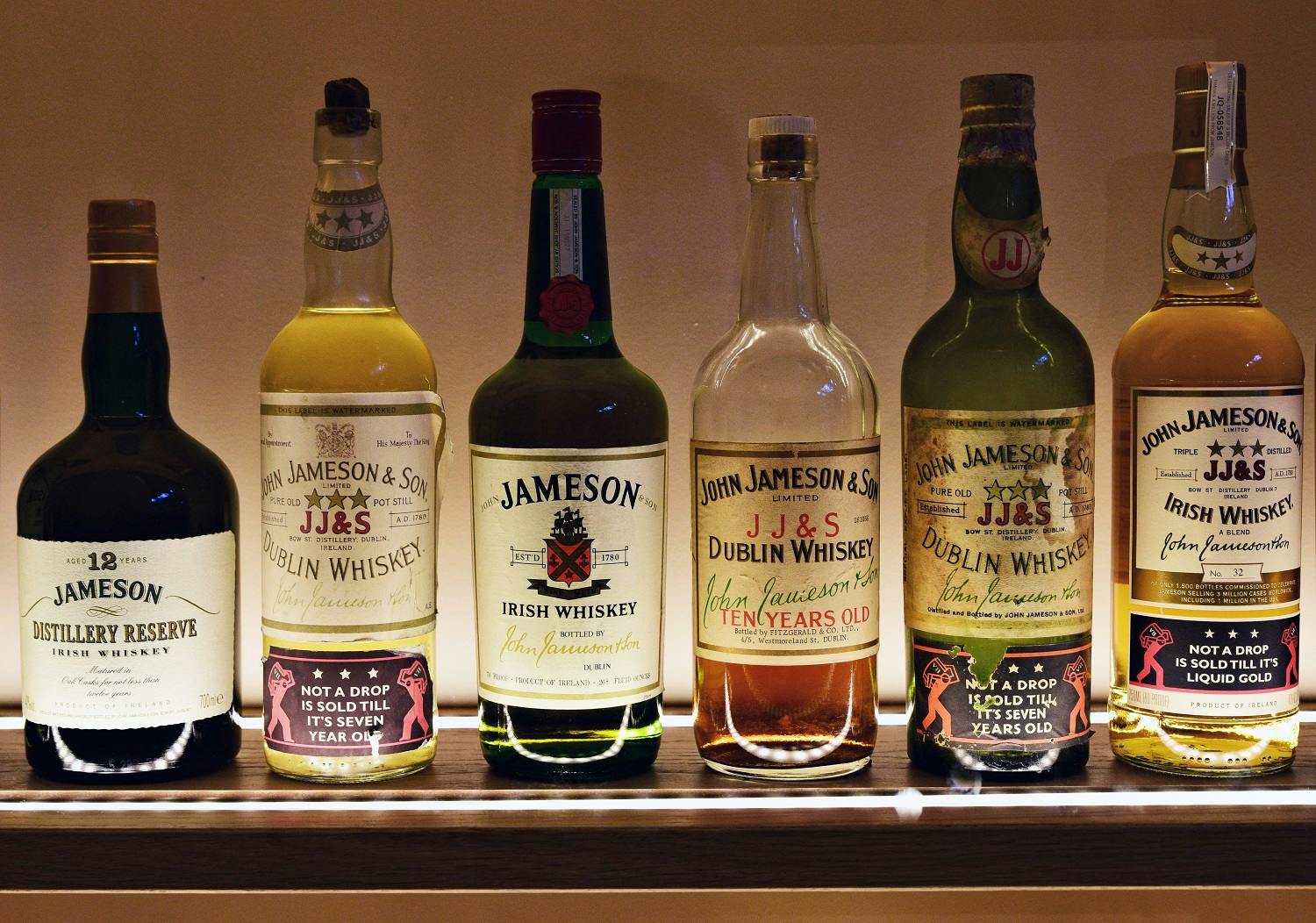Irish Whiskey in Dublin: Mastering the Drop at the Original Jameson Distillery
There was no science to what I did, nor years of experience to guide my actions. I just took two different whiskeys and mixed them together. Now I’m sipping the resultant concoction and nodding in appreciation of its silky texture and robust, woody flavor. “You couldn’t really go wrong though,” says Rob, the Irish whiskey expert and Jameson Distillery tour guide who is watching me drink. “It’s all top stuff you’ve got there.”
The “top stuff” to which Rob is referring is Jameson whiskey. Three varieties of this robust, brown spirit are laid out before me on a bar top inside the original Jameson Distillery in Dublin, as part of the distillery’s Whiskey Makers Experience workshop.
They were so strong, in fact, that the initial mix I had made resulted in a throat-burning concentration of about 60 percent alcohol. It needed to be liberally diluted with water. Now that it’s been watered down, it is, as the Irish like to say, a “great drop.”

A Complicated Process
These whiskeys mature for more than three years in old wooden barrels. The oak notes emanating from the glass are the result of this aging—the final step in the whiskey-making process. But let’s, ever so quickly, go back to the start.
Flour created from malted and unmalted barley is mixed with hot water inside a giant steel cylinder called a mash tun. It stirs the concoction around until it forms a sweet liquid called mash that is fermented and becomes a weak alcohol. Then yeast is added, and the liquid is heated.
Now called wash, this liquid enters the distillation process. Unlike Scotch whisky, which is usually double-distilled, Irish whiskey like Jameson is typically distilled three times, resulting in a product that is lighter and smoother.

Where the Magic Happens
With each sip of the whiskey I’ve just mixed myself, I’m more and more pleased to be right where I am. The Jameson Distillery, a giant complex in downtown Dublin that receives more than 300,000 visitors each year, has become one of the principal tourist attractions of the Irish capital. Travelers come here for a variety of reasons.
Some simply want to try the wide variety of Jameson whiskeys or join one of its five tours and workshops that teach visitors about the fascinating Irish whiskey history. It is for this latter reason that I have come to the distillery. While I was born and raised in Australia, both of my parents are from the Emerald Isle. Several members of my Irish family had recommended I experience the activities at the distillery.
I was spoiled for choice. The most popular activity here is the distillery tour, which involves a 40-minute exploration of the facility, as well as a comparative whiskey tasting and a complimentary drink at the on-site bar. While the distillery is no longer operational –Jameson shifted its production to County Cork in 1975– it remains in a functional state. Guests can still learn first-hand how the distilling process works.

The True Origin of Whiskey
Ireland is widely considered the birthplace of whiskey, and Jameson was first distilled at this location back in 1780. “Scottish people will tell you they created whiskey, but really it was us,” my guide Rob says with a wink and mischievous smile. In Scotland, where it is spelled “whisky” without the “e,” the earliest record of this grain alcohol dates back to the late 1400s. The Irish, however, say they have evidence of whiskey being distilled in their country almost a century earlier.
The Jameson Distillery began as a small operation here in Dublin 239 years ago. Over the following century, the popularity of Irish whiskey skyrocketed. There were more than 80 commercial distilleries scattered across Ireland, together producing more than 100 million liters of whiskey per year. By the late 1800s, it was the most popular whiskey, not just in Europe, but in the world.
Then Irish whiskey hit the rocks, so to speak, in the first few decades of the 20th century. War at home and abroad, combined with the effects of alcohol Prohibition in the United States, caused global sales of Irish whiskey to plummet.

A New Era of Irish Whiskey
It wasn’t until the 1980s, when Jameson was taken over by wealthy French distilling company Pernod Ricard, that the Irish whiskey industry began to recover. From just two whiskey distilleries in the 1970s Ireland now has more than 20. The country boasts a host of other major whiskey brands like Tullamore Dew, Bushmills, Powers and Redbreast. Complementing these mainstream labels are dozens of small Irish whiskey brands. Many of these boutique distilleries offer tours as well, such as Connacht Distillery in County Mayo, Kilbeggan Distillery in County Westmeath, and Ballykeefe Distillery in County Kilkenny.
These tours undoubtedly add to the appreciation of Irish whiskey and its complicated process, based on my experience. Before I entered the Jameson distillery, whiskey had passed my lips countless times in my life. After I left this facility, each time I’ve tasted this robust Irish spirit I’ve picked up on scents and flavors that previously went undetected. Finally, I now recognize the centuries of thought and craft that have gone into perfecting this most Irish of drinks.

